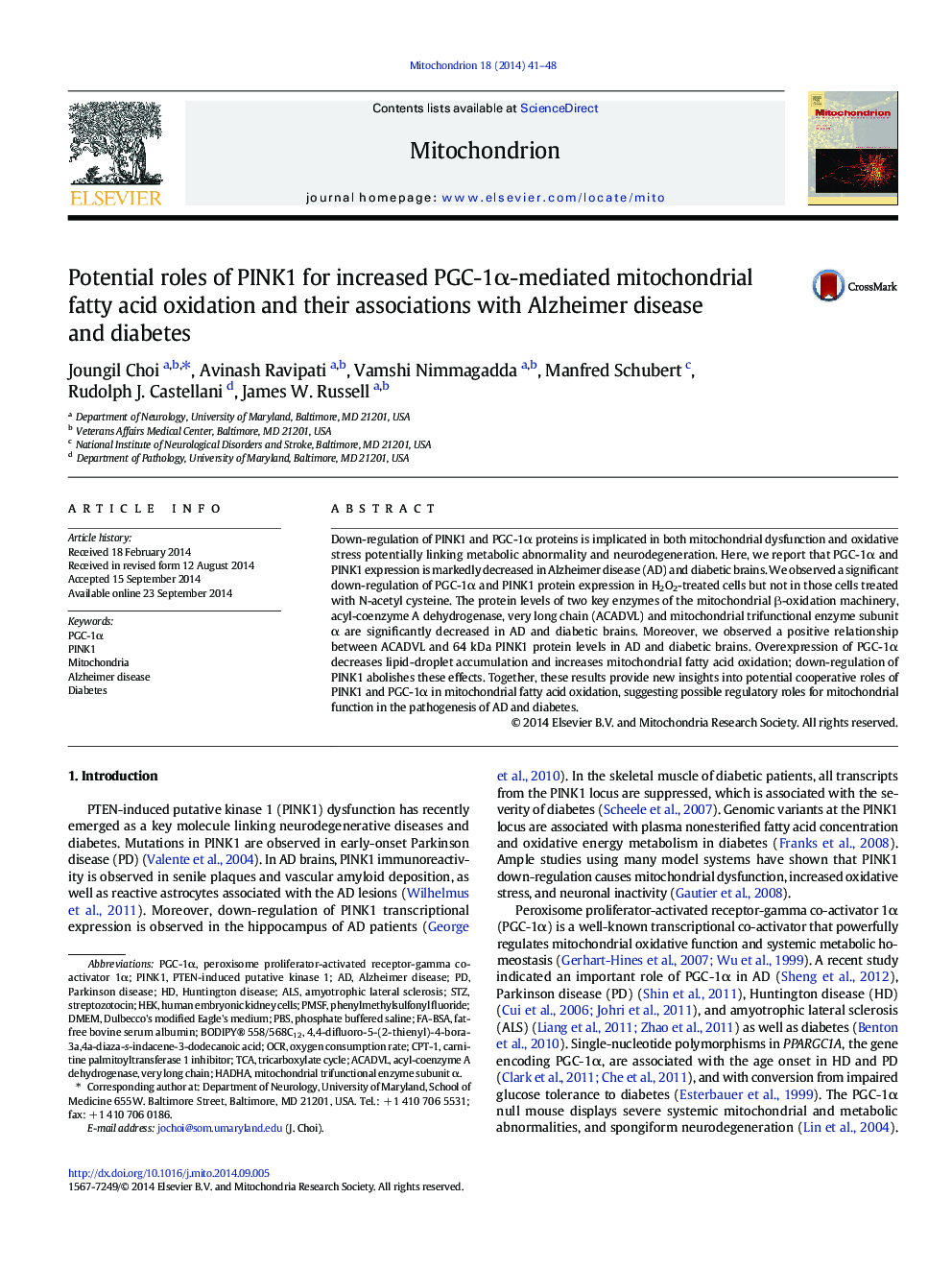| Article ID | Journal | Published Year | Pages | File Type |
|---|---|---|---|---|
| 8399291 | Mitochondrion | 2014 | 8 Pages |
Abstract
Down-regulation of PINK1 and PGC-1α proteins is implicated in both mitochondrial dysfunction and oxidative stress potentially linking metabolic abnormality and neurodegeneration. Here, we report that PGC-1α and PINK1 expression is markedly decreased in Alzheimer disease (AD) and diabetic brains. We observed a significant down-regulation of PGC-1α and PINK1 protein expression in H2O2-treated cells but not in those cells treated with N-acetyl cysteine. The protein levels of two key enzymes of the mitochondrial β-oxidation machinery, acyl-coenzyme A dehydrogenase, very long chain (ACADVL) and mitochondrial trifunctional enzyme subunit α are significantly decreased in AD and diabetic brains. Moreover, we observed a positive relationship between ACADVL and 64 kDa PINK1 protein levels in AD and diabetic brains. Overexpression of PGC-1α decreases lipid-droplet accumulation and increases mitochondrial fatty acid oxidation; down-regulation of PINK1 abolishes these effects. Together, these results provide new insights into potential cooperative roles of PINK1 and PGC-1α in mitochondrial fatty acid oxidation, suggesting possible regulatory roles for mitochondrial function in the pathogenesis of AD and diabetes.
Keywords
PBSACADVLOCRCPT-1PGC-1αSTZPINK1PMSFTCAHEKDMEMDulbecco's modified Eagle's mediumPTEN-induced putative kinase 1streptozotocinamyotrophic lateral sclerosisAlzheimer diseaseALSDiabetesHuntington diseaseParkinson diseaseHADHAhuman embryonic kidney cellsPhosphate buffered salinephenylmethylsulfonyl fluorideMitochondriaOxygen consumption rate
Related Topics
Life Sciences
Biochemistry, Genetics and Molecular Biology
Biophysics
Authors
Joungil Choi, Avinash Ravipati, Vamshi Nimmagadda, Manfred Schubert, Rudolph J. Castellani, James W. Russell,
